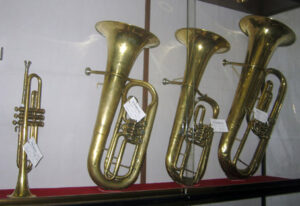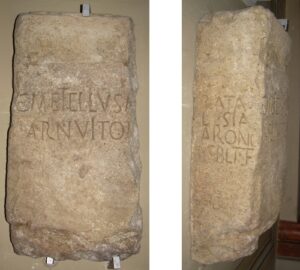Curiosità
Concerto Cantoni
 Il Concerto Cantoni
Il Concerto Cantoni
The Concerto Cantoni was founded in 1861 in Casale di Mezzani by Giuseppe Cantoni, a flugelhorn player. It is a musical formation made up of about ten performers. It was innovative for that time, above all because for the first time it made dance music, waltz, polka and mazurka available to peasants and the humbler classes, until then present only in the homes of nobles who could afford to pay the musicians. The concert was born with the peasant festivals that took place on the occasion of the harvests, the harvesting, the grape harvest and the festivals; he soon became known throughout the Parma area and neighboring provinces and his participation became much in demand.
A peculiarity of the Concerto Cantoni is the type of instruments used almost all wind instruments. This will differentiate it from the Romagna formations due to the lack of drums and accordion, from those of Modena and Reggio Emilia due to the absence of accordion and violins. Another feature of the Concerto Cantoni is the presence of many musicians from the same family. At the time of the foundation, Giuseppe Cantoni will employ his own children to play the various instruments, only the clarinets are played by external musicians. Over the years, it is estimated that there have been at least fifty elements of the formation belonging to the Cantoni family. In the 60s the Concerto was also used on the set of some films by Bernardo Bertolucci “Novecento”, “The Spider’s Strategy” and “The Tragedy of a Ridiculous Man” and collaborated artistically with Giorgio Strehler and Roberto Leydi. In 2004, a museum was inaugurated in Coltaro di Sissa which exhibits the relics of this musical formation.
For more information: Museo Cantoni http://www.museiparma.it/site

The cippus of Caius Metellus
The Roman stone that commemorates Caius Metellus, son of Marco, a Roman citizen, who lived between the 1st and 2nd century AD, is one of the most ancient examples of the territory of Sorbolo. Discovered in the 17th century, the cippus was later adapted to celebrate the memory of the archpriest Ulisse Baroni who died of the plague in 1630; on that occasion the cymatium of the ancient monument was probably eliminated and a new inscription was added, without touching the text on the main facade, as a sign of respect for its antiquity. It was rediscovered in 1950 in correspondence with a door of the Sorbolo rectory, where it had been reused as a threshold. Its importance deserved its placement inside the church of San Faustino and Giovita where it can be guaranteed, in addition to its protection, also its visibility by anyone.
For more information http://www.diocesi.parma.it/parrocchie/sorbolo/


